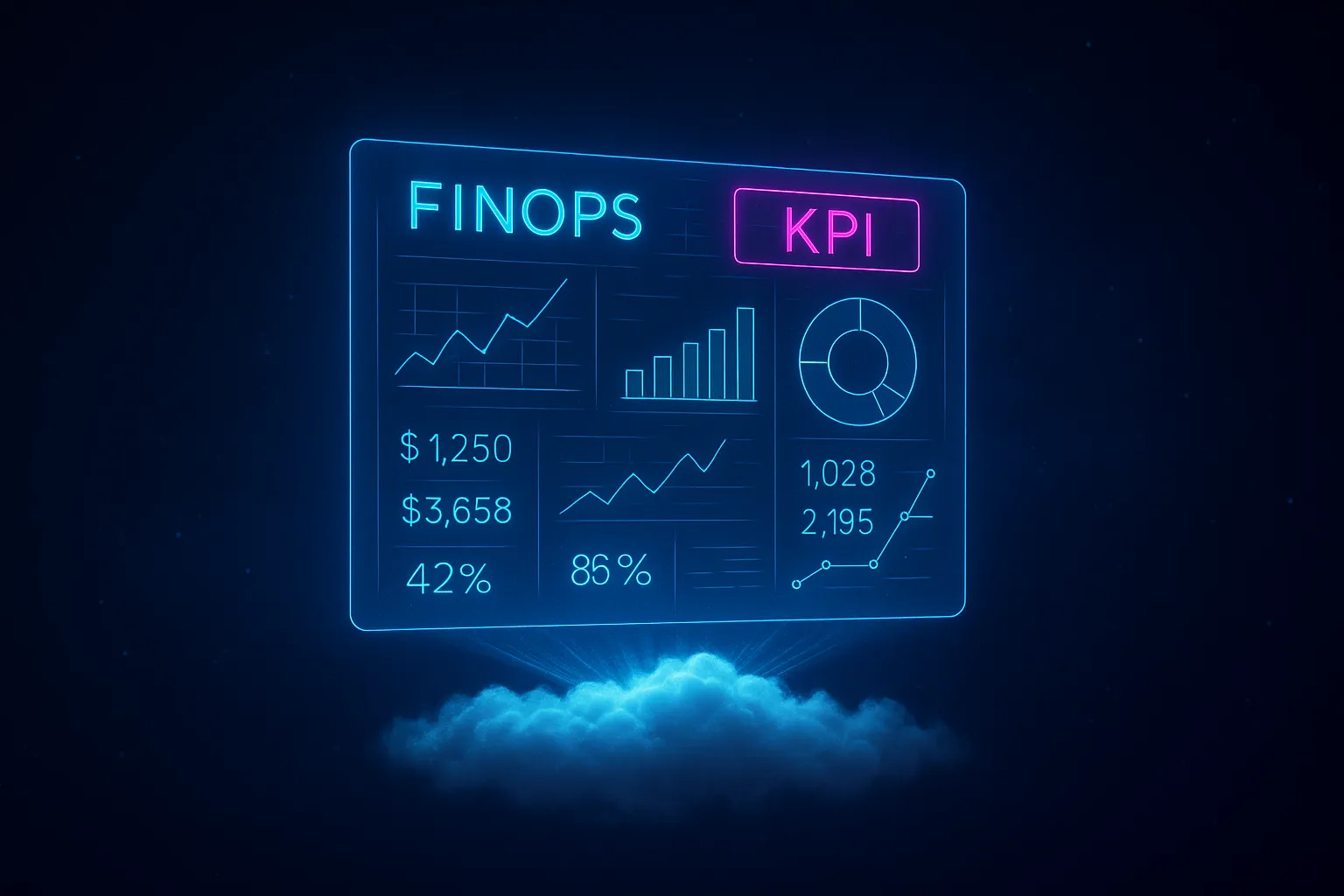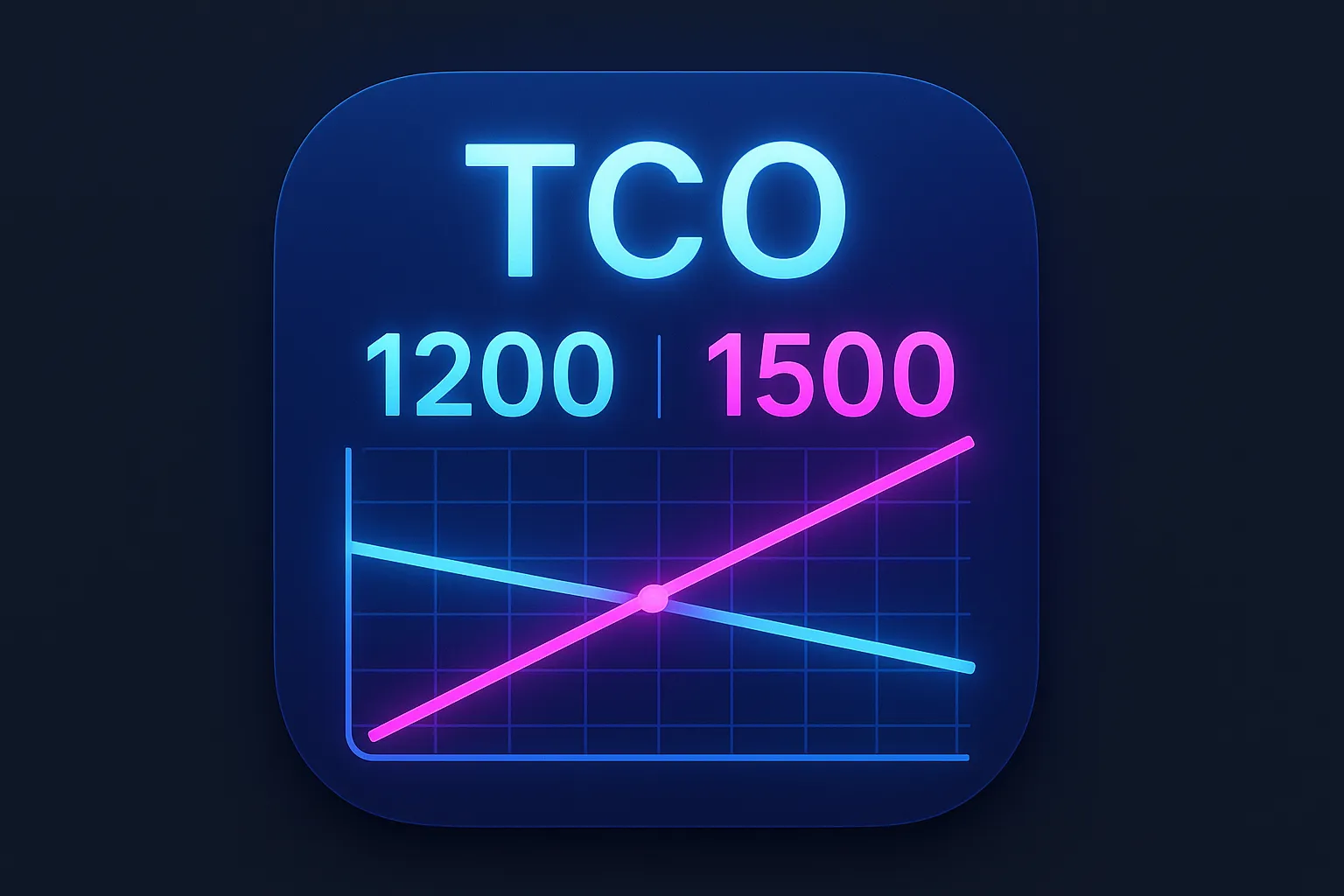Quantifying the Cost of Cloud Waste
Key term: Cloud waste – any cloud spend that delivers no business value because resources are idle, oversized, orphaned, or poorly assigned.
Every budget line hides waste, but cloud waste hides in plain sight. Flexera’s 2025 State of the Cloud report pegs it at 27% of IaaS and PaaS spend. For a company spending $10 million a year, that means $2.7 million produces zero customer value. Meanwhile infrastructure bills keep climbing - hyperscalers posted 21% year-over-year growth last quarter as AI workloads flooded their servers. Investors applaud the top-line surge, then turn to your margins. If you cannot show a plan to claw back idle dollars, the board will ask why not. The upside: unlike revenue growth, waste reduction is within your direct control. The following guide shows how to find, size, and sell the savings opportunity.
The 3-step opportunity sizing
Key term: P&L - Profit and Loss statement.
- Pull trailing-12-month cloud spend. Combine invoices from every provider, including support and marketplace charges.
- Apply an industry waste band. Use 25%, 30%, and 35% to keep the range conservative.
- Translate to potential savings. A company spending $20 million could unlock $5 million - $7 million. That covers an entire AI pilot program or two feature squads for a year.
Hard savings are dollars you can stop paying this quarter. Soft savings are costs you never incur because growth happens on a cleaner footprint. Finance teams love both - one lands on this year’s P&L, the other protects long-term unit economics.
Where the waste hides
- Idle capacity - dev or test environments that stay on nights and weekends.
- Oversized instances - lift-and-shift workloads still running on 16-core VMs that idle at 5% CPU.
- Orphaned assets - disks, snapshots, and IPs no longer connected to live workloads.
- Unallocated spend - resources without cost tags that linger because no team feels the charge.
Patterns are easy to spot. Sort your usage report by zero instance hours or low average utilization and the low-hanging fruit is instantly visible.
Quick action: your 5-minute waste snapshot
- Open last month’s invoice CSV.
- Filter rows where average CPU <10% or storage IOPS = 0.
- Tag those rows “investigate,” sum the cost column, and write the total on a sticky note.
You now hold a single number that will jolt the next leadership meeting. Expect a short silence - then a pointed conversation about what to do next.
Turn the number into momentum
- Frame upside, not failure. “We can save $6 million” resonates more than “We wasted $6 million.”
- Tie savings to growth. Freeing $6 million funds 12 generative-AI experiments without asking for fresh budget.
- Highlight speed. Reclaiming idle and orphaned resources can show real dollars back in the first billing cycle, signaling early wins before larger initiatives begin.
A quick, defensible estimate turns invisible waste into an executive-level opportunity. That perspective shift lays the groundwork for the business-case math and resourcing plan coming next.
Building Your FinOps Engine
Key term: FinOps – a cross-functional practice that synchronizes engineering, finance, and business goals to maximize cloud value.
The talent triangle
A FinOps program starts with people, not software. The core team is lean:
- FinOps lead – part strategist, part mediator, drives accountability across engineering and finance. U.S. postings cluster between $150k – $180k total compensation.
- FinOps engineer – automates tagging, rightsizing, and rate optimization; national average salary ~$102k.
- Cloud analyst – mines usage data for trends and anomalies; many roles list between $95k – $120k.
That three-person squad can steward hundreds of thousands of monthly line items. When headcount is tight, a single engineer plus a finance partner still beats leaving millions of dollars unmanaged.
Process cadence that keeps dollars honest
FinOps is a rhythm, not a project:
- Weekly spend huddle – 15 minutes to surface cost anomalies before they snowball.
- Monthly rightsizing sprint – engineering teams remediate the top five idle or oversized workloads.
- Quarterly commitment review – revisit Savings Plans, Reserved Instances, and volume discounts to ensure coverage matches demand curves.
Each ritual attaches a dollar value to engineering decisions, turning optimization into a habit rather than an after-hours chore.
Tools that pay for themselves
Most cost-management platforms price as a slice of the cloud bill – 1.25% to 3% of managed spend is common. At $20 million annual spend, even the high end of that range ($600k) is justified if the tool uncovers just 5% waste. Look for features that accelerate the human work:
- Near real-time spend telemetry
- Automated tagging enforcement
- Rightsizing and commitment purchase recommendations
- Anomaly alerts piped to chat and ticket queues
Blend native cloud consoles with a third-party dashboard only when the incremental insight is material. Shiny reports that no one acts on are hidden waste.
Quick action – the 5-minute role map
Open your org chart, search for anyone with “cloud,” “capacity,” or “cost” in their title, and drop those names into a one-slide matrix labeled People – Process – Tool. Gaps jump out instantly: no owner for savings plans, no engineer automating tags, or no analyst tying costs to unit economics. Bringing that slide to the next budget review is a fast path to staffing approval.
Proof in numbers
Key term: ROI (return on investment) – the ratio of net benefit divided by total cost, expressed as a percentage.
McKinsey research shows disciplined FinOps programs cut 20% – 30% of cloud spend. On a $20 million bill, that is $4 million – $6 million. After salaries and tooling, many organizations report 3× – 5× first-year ROI – savings that hit both the profit line and the growth roadmap.
Why this engine matters
Cloud waste is a solvable problem. Pair a compact team with light-touch processes and a right-sized tool, and optimization shifts from sporadic crusade to continuous, measurable discipline. In the next unit we translate those ingredients into the ROI models executives need to green-light the initiative.
ROI Models That Satisfy the C-Suite
A CTO at a global retailer recently asked for $600k to stand up a FinOps program. Her pitch moved from nice-to-have to must-fund when she framed the request in three financial lenses every board member knew by heart: payback period, net present value, and unit-economics lift. The budget was approved in one meeting. You can replicate that path with the models below.
Payback period – fast or slow?
Key terms:
- Payback period – the time it takes for cumulative savings to equal initial investment.
- TEI – Total Economic Impact.
McKinsey research shows the average payback for cloud modernization runs 1-3 years – long compared with most cost-optimization programs. FinOps initiatives routinely beat that mark: Sedai’s 2024 survey lists 6-month recovery for autonomous optimization projects, a timeline echoed in multiple customer case studies. Google Cloud’s own TEI report shows a 6-month payback and 265% ROI for its Operations Suite. When an executive sees savings covering program costs inside two billing cycles, resistance fades quickly.
Net present value – the CFO’s favorite
Key term: Net present value (NPV) – today’s dollar value of future cash flows minus upfront outlay, discounted at a chosen rate.
NPV captures the time value of money, making a $1 million benefit in 3 years worth less than $1 million today. A few tips keep the math credible:
- Pick a discount rate your finance team already uses – often 8-12% matching weighted average cost of capital.
- Model hard and soft savings separately. Hard savings hit the P&L, while soft savings (avoided future spend) get a higher haircut to stay conservative.
- Run a sensitivity check. Show how NPV shifts at ±2 percentage points on the discount rate, proving you understand risk.
NPV = Σ( Cash_t / (1+r)^t ) – Investment, whereCash_tis a Cash flow for a specific period (year),r- Discount rate andtis time index (years).
| Year (t) | Forecast cash saving | Present-value factor (10 % r) | Present value |
|---|---|---|---|
| 1 | $1 500 000 | 1 / 1.10¹ = 0.909 | $1 363 500 |
| 2 | $1 200 000 | 1 / 1.10² = 0.826 | $991 200 |
| 3 | $800 000 | 1 / 1.10³ = 0.751 | $600 800 |
| Σ PV of benefits | $2 955 500 | ||
| Initial investment | $600 000 | ||
| NPV | $2 355 500 |
Because the NPV is positive, the project adds $2.36 million in today’s dollars - making it financially attractive even after accounting for time, risk, and up-front costs.
Unit-economics lift – the product lens
Key term: Unit economics – cost and revenue for one instance of value (a customer, transaction, or API call).
Cloud spend often scales with usage, so trimming waste drops directly to contribution margin.
Example: An ad-tech firm spending $0.07 per thousand impressions (CPM) rightsizes idle clusters and sees CPM fall to $0.05. That 28% drop raises gross margin on every future contract – a story sales leaders and investors both applaud.
Choosing the right lens
| Lens | Answers the question | Audience | Benchmark |
|---|---|---|---|
| Payback period | “How quickly do we recover cash?” | CEO, COO | FinOps best-in-class ≈ 6 mo |
| Net present value | “What is the project worth in today’s dollars?” | CFO, board | Positive NPV at 12% discount is strong |
| Unit economics | “Does it improve margin per customer?” | CRO, investors | Any reduction >20% usually material |
Move from math to mandate
Finish your deck with one slide per lens, each anchored by a single headline number: 6-month payback, $2.36 million NPV, 28% CPM reduction. Close by reminding approvers that all three metrics point in the same direction – green. The math is now unmistakable; the decision shifts from “Should we invest?” to “How fast can we start?”
Securing Executive Buy-in and Budget
Key term: Executive buy-in – agreement from senior leaders that a proposal is valuable enough to receive time, money, and visible support.
Map the room
Every deal is closed twice: once in the hallway, then in the meeting. Start by matching cost-optimization benefits to the scorecards each leader cares about.
- CFO – boosts operating margin and lowers earnings risk.
- CEO – funds growth experiments without new capital.
- CIO / CTO – frees engineering capacity for innovation.
- CISO – reduces attack surface by removing abandoned workloads.
- Business unit heads – drops cost per customer and improves pricing power.
Knowing who wins and how lets you tailor one message per stakeholder, not one slide deck for all.
Craft a narrative leaders remember
Busy executives process stories faster than spreadsheets. A four-slide arc keeps the pitch tight:
- Problem – “We spent $22 million on cloud last year. Analysis shows 27% delivered no value.”
- Opportunity – “Eliminating that waste saves $5 million to $7 million and protects future margin.”
- Solution – “A three-person FinOps team, lightweight tooling, and a standing review cadence cut spend in six months.”
- Ask – “Approve $600k for year one to unlock at least $2 million in hard savings.”
Stick to one takeaway per slide. Reinforce each point with a single headline number or short anecdote.
Handle pushback before it happens
Common objections surface in almost every budget review. Address them proactively.
- “Growth matters more than savings.” Response: Savings fund growth - $5 million freed equals two new product squads.
- “Engineers will resist cost policing.” Response: FinOps embeds engineers in the loop, rewarding teams that ship features on lean footprints.
- “We already negotiated discounts.” Response: Rate optimization handles price. FinOps tackles utilization and idle capacity, which discounts never fix.
- “The ROI sounds too good.” Response: Show third-party benchmarks (Flexera 2025, McKinsey cloud studies) and your own 30-day invoice analysis to validate assumptions.
Short starting play: the 90-day quick-win roadmap
Leaders feel more comfortable funding a program with visible milestones. Lay out three clear phases:
- Days 1-30 – Form the FinOps pod, integrate spend data, surface top ten idle resources, and reclaim the easiest two.
- Days 31-60 – Launch weekly spend huddles, implement automated tagging rules, and convert initial savings into renewed engineering capacity.
- Days 61-90 – Right-size major workloads, lock in revised commitment coverage, and publish a dashboard that tracks savings against target.
Each phase ends with a concrete deliverable (resources shut off, policy enforced, cost dashboard live) so executives can measure progress without deep technical reviews.
Close with the ask
End on a single slide titled Decision. Restate the numbers executives already believe: 6-month payback, $2 million net present value, 25% lift in contribution margin. Specify the budget line required, the sponsor who will own results, and the date the first savings report will land.
When every stakeholder sees their win, the narrative is short, the risk is bounded, and the timeline is real, approval tends to come quickly. The groundwork is now set - the next step is simply scheduling the kickoff meeting.
Putting It All Together
You now have a clear map:
- Waste quantified – a quick calculation that turns hidden spend into a headline savings number.
- FinOps engine defined – the people, cadence, and tools that convert one-time cuts into continuous discipline.
- ROI framed three ways – payback, net present value, and unit-economics lift that speak to every corner of the C-suite.
- Pitch ready – a four-slide story and 90-day roadmap that earns budget and visible executive support.
The final step is action. Open the FinOps Business Case Model Builder, drop in your annual cloud spend, adjust few sliders and get hard savings ranges, NPV, ROI and payback curves. In less than 2 minutes you will hold a board-ready spreadsheet and a one-page summary slide.
If this guide sharpened your perspective, stay with us. The next post in the series breaks down proven Cloud Cost Optimization Frameworks - from FinOps taxonomy to the AWS Well-Architected cost pillar - and shows how to layer them onto the business case you just built. Subscribe so you do not miss a step on the path to cloud dollars that actually drive value.






